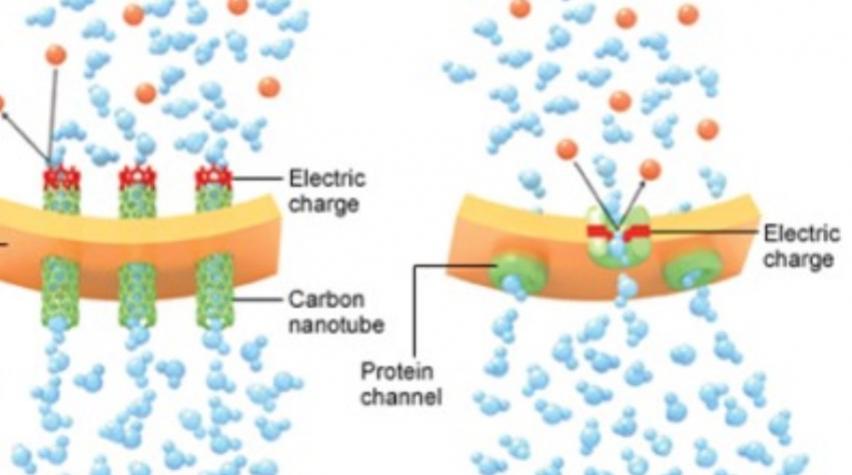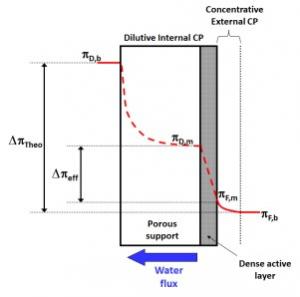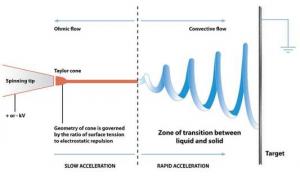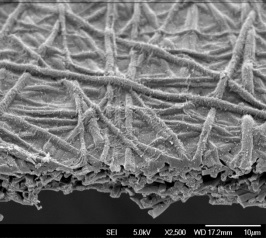

As part of the "Osmotic Processes for the 21st Century" sessions at the AIChE 2013 Annual Meeting, Dr. Jeffrey McCutcheon of UConn's Center for Environmental Sciences and Engineering made a presentation on nanofiber-supported thin film composite (TFC) membranes. The crux of the talk was that conventional asymmetrical membrane structures cause severe mass transfer limitations, and that future membrane designs needed to focus on mimicking the functionality and specificity of biological membrane systems.
The "Now"

Most membrane operate in a "pressure" mode, where the mass transfer driving force is a supplied pressure differential, sometimes at hundreds of psi. As such, the design of membranes has to account for this, and a composite structure of an active membrane layer in conjunction with a porous support structure has evolved. This traditional structure has an inherent flaw, in that the support structure is itself a strong barrier to mass transfer of the permeating species.
Tweak or toss?
In designing a new membrane system, the first question is whether the approach should be to modify an existing design or concept, or toss tradition aside and design anew. The advantages of a radically new design include the ability to tune the structure and chemistry for specific applications, as well as the possibility of using a variety of special and "selective" materials and polymer processing methods. The disadvantages are the requirement for development of new interfacial polymerization techniques, along with the fact that many novel formation approaches may not be scaleable and/or could be expensive. One of the primary goals for a new design was the creation of support layers that are thin, highly porous, non-tortuous, and hydrophilic. Electrospun nanofibers fit the bill.

Electrospinning nanofibers
The goal is to build a radically different and tunable supporting material for thin film composite membranes that combines the benefits of hydrophilicity with high porosity, but without sacrificing scaleability. Electrospinning can be used to produce submicron sized fibers in nonwoven mats that exhibit high porosity and low tortuosity. Polymers that can be electrospun in this way include polyacrylonitrile (PAN), cellulose acetate (CA), and nylon. Spun onto polyethyleneterepthalate, these polymers can be "tuned" with respect to fiber size and morphology, thus allowing customization of performance and selectivity unknown with existing film technologies.
Interfacial polymerization

In order to complete the TFC membrane, a process called interfacial polymerization is utilized. Trimesoyl Chloride ( 1,3,5-Benzenetricarboxylic acid chloride) and 1,3-benzene diamine are co-polymerized in contact with the nanofiber mat, and in addition to the co-polymerization, the free (third) acid chloride can react with the nanofibers to form the amide creating an interfacially formed polyamide.
Preliminary indications
Nanofiber TFC membranes are a unique platform for osmotic processes, particularly those of the low pressure variety such as forward osmosis and osmotic dilution. The nanocomposite-supported TFC membranes produced in this research effort exhibit two to three times higher water flux than standard RO membranes. These membranes can also be made pressure tolerant for high pressure RO applications. For more information on the exciting new directions that membrane designs are taking, contact Dr. Jeffrey McCutcheon at the University of Connecticut.


